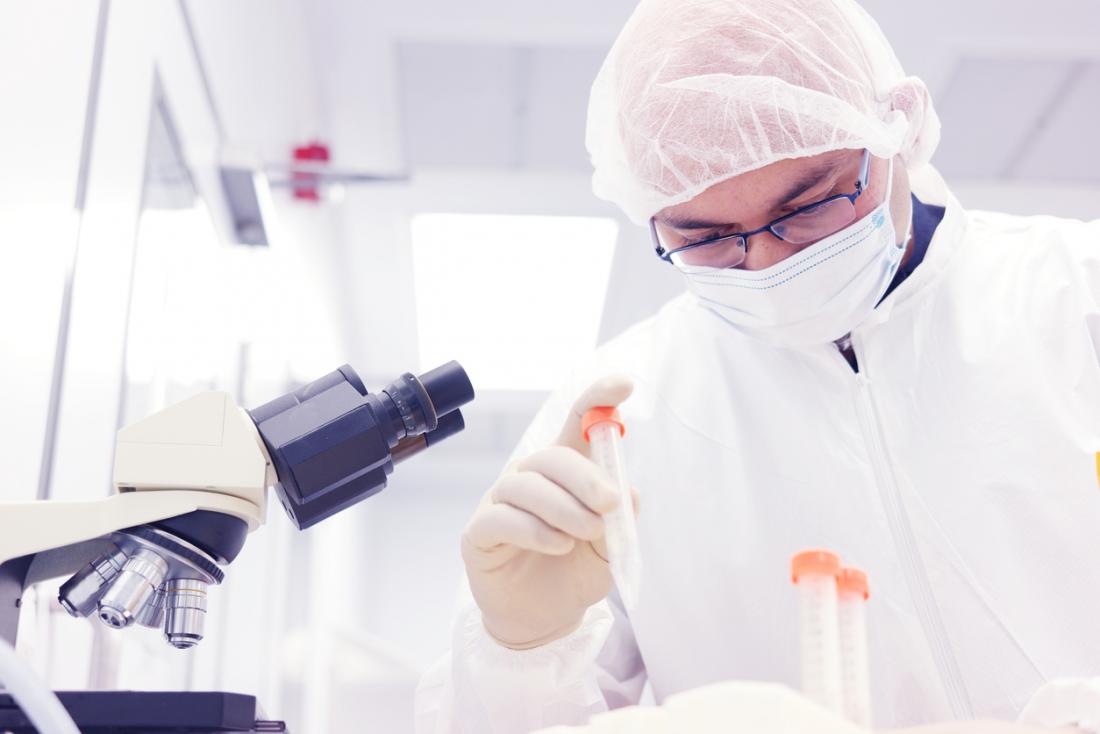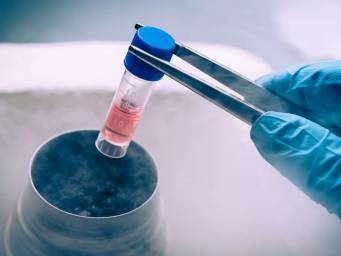It is important to note, however, that while the United States Food and Drug Administration (FDA) have approved hematopoietic stem cell transplantation (HSCT) for use against cancer, it is not yet approved for wider use.
What are stem cell transplants used to treat?

Stem cell treatments are still in the experimental stages for treating autoimmune diseases.
Stem cells are cells that have the ability to develop into a variety of different specialist cells within the body.
Stem cell transplants are approved to treat various cancers. These include multiple myeloma, leukemia, and some lymphomas.
Additionally, HSCT is used in many specialist clinics around the world to treat autoimmune diseases. Perhaps the most notable of these is multiple sclerosis.
An extremely high success rate has been claimed for this treatment, but it is still regarded as experimental.
Although used to treat cancer, HSCT is not considered to be an oncological procedure. It is referred to as a hematological process, meaning one that involves the blood’s role in health and disease.
Donor selection
There are two types of HSCT. These are allogeneic and autologous.
Allogeneic HSCT
Allogeneic HSCT requires a donor to supply suitable stem cells. Doctors performing this type of HSCT need to ensure that the donor is an appropriate match for a recipient. Often, this is a close relative, although other donors, matched through tissue typing, are also used.
Proteins known as human leukocyte antigens (HLA) are used in tissue typing. They allow clinicians to compare a person’s blood and tissue type with blood samples from possible donors. In this way, they can check to see if a donor’s stem cells are the right match.

Allogenic HSCT often requires a donor from the patient’s close family.
As well as using stem cells from a donor’s blood, cells from umbilical cord blood can also be used.
Umbilical cord stem cells are less developed than other stem cells, and this means that they can grow into different types of cells.
Umbilical cord blood stem cells are frozen at birth, which is important because they do not suffer any environmental damage or aging. As a result, cord blood transplants do not require such a high level of tissue matching.
Autologous HSCT
Autologous HSCT avoids the issue of trying to find a matching donor because stem cells are harvested from the patients themselves. The cells are cleaned and frozen before being reintroduced to the individual after they receive the chemotherapy drugs.
The steps of autologous HSCT, according to the Pirigov Center in Moscow, Russia, are as follows:
- stem cell stimulation, from 4 to 6 days
- stem cell collection, from 1 to 3 days
- chemotherapy, for 4 days
- stem cell infusion, in 1 day
- isolation, from 8 to 12 days
How the process works
While the therapy is a form of stem cell transplantation, the stem cells are not the main part of the story. In fact, the key element is an infusion of chemotherapy drugs.
There are two types of transplantation process, known as myeloablative and nonmyeloablative.
Myeloablative includes the use of high-dose chemotherapy drugs to destroy the immune system. Nonmyeloablative uses lower-dose, more tolerable chemotherapy drugs to suppress the immune system. High doses of chemotherapy are needed to treat cancers.
In both processes, the stem cells are transplanted after the chemotherapy drugs are administered to help build a new, and hopefully healthy, immune system.
Lower doses of chemotherapy have been found to be successful in dealing with autoimmune diseases, such as multiple sclerosis.
Risks and complications

The donor may be advised to take iron supplements after the procedure to boost their red blood count.
Hepatic veno-occlusive disease (VOD) with additional kidney or lung abnormalities can develop in people after they receive HSCT. In March 2016, the FDA approved Defitelio (defibrotide sodium) as a treatment for such a development.
Another risk associated with allogeneic stem cell transplant is graft-versus-host-disease (GVHD), which occurs when donated cells attack a person’s tissues. The lower the match of tissue type between patient and donor, the higher the risk of GVHD. Doctors may use drugs to reduce the possibility of infection or GVHD.
For a surgical procedure, there are not too many risks for donors to worry about. Also, it is rare to encounter serious complications. Possible complications include:
- reactions to anesthesia
- infections
- damage to nerves or muscles
- reactions to a transfusion
- injury at the site of a needle insertion
The American Cancer Society (ACS) state that donors may experience tiredness, discomfort, and aching around the lower back and hips for a few days after donating stem cells.
This discomfort may be relieved with over-the-counter acetaminophen and nonsteroidal anti-inflammatory drugs (NSAIDs), such as ibuprofen.
Doctors may suggest that donors should take iron supplements until their red blood cell count returns to normal. Many donors can return to their daily routine after 2 to 3 days rest. In some cases, however, full recovery can take 2 to 3 weeks.
Research into treating autoimmune diseases
Different studies have reached different conclusions about the use of HSCT for autoimmune diseases.
Canada reported the results of a clinical trial of autologous HSCT as a great success. In this study, severely disabled people with multiple sclerosis were reported to be walking, cycling, and even skiing after treatment. The story made newspaper headlines around the world.
Other researchers from University Hospital Basel, Switzerland, had previously looked at various difficulties encountered by people who have autologous HSCT as a treatment for autoimmune diseases.
Their report was published in Pediatric Research in February 2012 and gave a more cautious view of the use of the treatment, stating that HSCT “is associated with significant morbidity and mortality and is therefore not yet standard of care.”
Looking to the future, the authors wrote that new complications may be found in patients being treated with HSCT for autoimmune diseases. As a result, they recommended several precautionary measures for those using this treatment method:
“Careful evaluation of organ function before HSCT is advised; after HSCT, follow-up examinations must be adapted to the patient and to the type of conditioning in a standardized form.”
